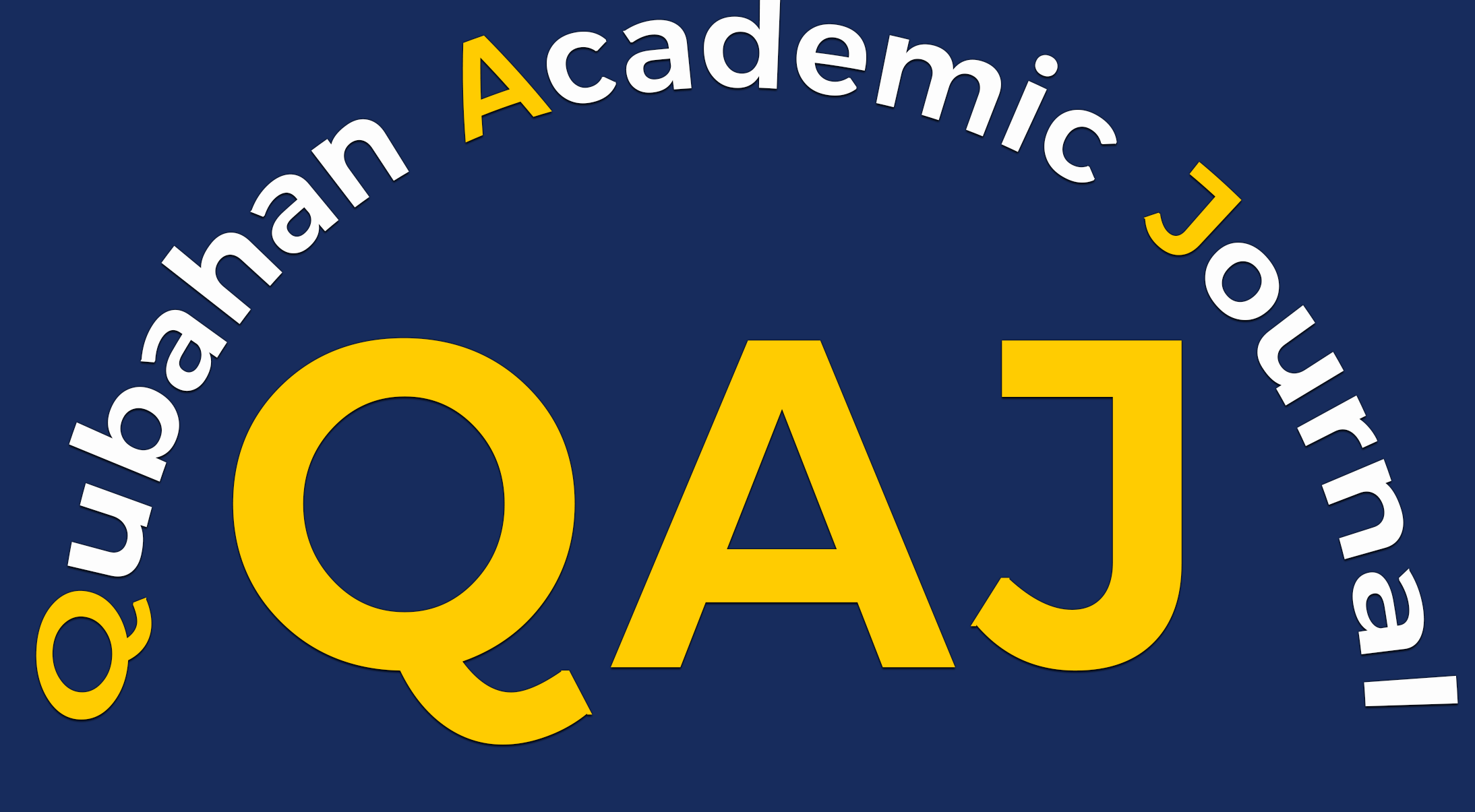Exploring Students’ Numerical Literacy on Statistical Problem-Solving in Indonesia
DOI:
https://doi.org/10.48161/qaj.v3n4a181Keywords:
Numerical literacy, mathematics education student, statistical problem, problem-solvingAbstract
Numerical literacy is a skill that must be possessed by students. It is the ability to use numbers and mathematical symbols to solve practical problems in daily contexts. In statistics courses, it is identified that 73.3% of students could solve paired t-test problems using the SPSS 21 program, but 86.36% of these students could not understand the symbols and numbers in the output of the program. This indicates that students' numeracy literacy skills need further analysis. This study aims to analyze students' numeracy literacy by using paired t-test statistical problem-solving. The type of this research was qualitative descriptive research with a case study method. This study employed a purposive sampling technique. The subjects were 30 students of mathematics education. Data were analyzed using a triangulation technique between two assignments. This study has obtained sixth major results. First, 53.3% of students cannot write statistical hypotheses correctly. Second, 73.3% of students cannot determine the solution at the output of the SPSS 21 program. Third, 60% of students cannot conclude their answers correctly. Fourth, subjects with low numerical literacy skills could understand the meaning of the questions. Fifth, subjects with medium numerical literacy skills should get training on numeracy literacy-based questions to improve their numerical analysis skills. Sixth, subjects with medium numerical literacy skills could conclude the solution correctly and tend to reflect on the process before concluding a final solution.
Downloads
References
Adirasari, R. P., Suprajitno, H., & Susilowati, L. (2021). The dominant metric dimension of corona product graphs. Baghdad Science Journal, 18(2), 349-356. https://doi.org/10.21123/BSJ.2021.18.2.0349
Aisyah, S., Utoyo, M. I., & Susilowati, L. (2020). The fractional local metric dimension of comb product graphs. Baghdad Science Journal, 17(4), 1288-1293. https://doi.org/10.21123/bsj.2020.17.4.1288
Alimudin, Laily, S., Helmi, Alimudin, N.F. (2022). The Students’ Numerical Literacy Ability in Junior High School. Jurnal Matematika Kreatif-Inovatif 13 (2): 269-282
Bolstad, O. H. (2020). Secondary teachers’ operationalisation of mathematical literacy. European Journal of Science and Mathematics Education, 8(3), 115–135. https://doi.org/10.30935/scimath/9551
Canan Güngören, Ö., Gür Erdoğan, D., Kaya Uyanik, G., & Demi̇ Rtaş Tolaman, T. (2022). The Relationship Between Cognitive Absorption and Digital Literacy Skills among Secondary School Students. Participatory Educational Research, 9(6), 113–129. https://doi.org/10.17275/per.22.131.9.6
Dotan, D., & Brutman, N. (2022). Syntactic chunking reveals a core syntactic representation of multi-digit numbers, which is generative and automatic. Cognitive Research: Principles and Implications, 7. https://doi.org/10.1186/s41235-022-00409-2
Grotlüschen, A., Desjardins, R., Liu, H. (2020). Literacy and numeracy: Global and comparative perspectives. International Review of Education (2020) 66:1
Habermann, S., Donlan, C., Göbel, S. M., & Hulme, C. (2020). The critical role of Arabic numeral knowledge as a longitudinal predictor of arithmetic development. Journal of Experimental Child Psychology, 193. https://doi.org/10.1016/j.jecp.2019.104794
Jain, P., & Rogers, M. (2019). Numeracy as Critical Thinking. Adults Learning Mathematics: An International Journal, 14(1), 23-33.
Lüssenhop, M., Kaiser, G., (2019). Refugees and numeracy: what can we learn from international large-scale assessments, especially from TIMSS? ZDM (2020) 52:541–555 https://doi.org/10.1007/s11858-019-01111-2
Noerman, T., Erlando, A., & Riyanto, F. D. (2021). Factors Determining Intention to Continue Using E-HRM. Journal of Asian Finance, Economics and Business, 8(2), 1079-1089. https://doi.org/10.13106/jafeb.2021.vol8.no2.1079
Nusantara, D.S., Zulkardi, & Putri, R.I.I. (2021). Designing PISA-like Mathematics Task Using A COVID-19 Context (PISAComat). Journal on Mathematics Education, 12(2), 349-364. http://doi.org/10.22342/jme.12.2.13181.349-364
OECD. (2014). PISA 2012 Results: What Students Know and Can Do (Volume I, Revised edition, February 2014): Student Performance in Mathematics, Reading, and Science. Paris: OECD Publishing. https://doi.org/10.1787/9789264208780-en
OECD. (2016). PISA 2015 Result (Volume I): Excellence and Equity in Education. Paris: OECD Publishing. https://doi.org/10.1787/9789264266490-en
OECD. (2019). Indonesia – Country Note – PISA 2018 results. Retrieved from https://www.oecd.org/pisa/publications/PISA2018_CN_IDN.pdf
Polat, M., & Turhan, N. S. (2022). A Meta-Analysis Study on The Relationship Between Mathematical Literacy And Mathematics Achievement In Pisa Tests.
Rosidah, Budayasa, I.K., & Juniati, D. (2018). An Analysis of Statistical Reasoning Process of High School Students in Solving the Statistical Problem. Journal of Physics: Conference Series (Vol. 1028, No. 1, p. 012125). IOP Publishing. doi :10.1088/1742-6596/1028/1/012125
Samdean, D.P., Suprajitno, H., Winarko, E. (2019). Flower Pollination Algorithm (FPA) to Solve Quadratic Assignment Problem (QAP). Contemporary Mathematics and Applications, 1(2), 121-130. https://doi.org/10.20473/conmatha.v1i2.17398
Santia, I., Purwanto, P., Sutawidjadja, A., Sudirman, S., & Subanji, S. (2019). Exploring Mathematical Representations in Solving Ill-Structured Problems: The Case of Quadratic Function. Journal on Mathematics Education, 10(3), 365–378. https://doi.org/10.22342/jme.10.3.7600.365-378
Santia, I., Purwanto, Subanji, Sudirman, & Sutawidjadja, A. (2021). Characteristics of Prospective Student Teacher’s Representation in Solving Ill-Well Algebraic Problems. Journal of Physics: Conference Series (Vol. 1779, No. 1, p. 012001). IOP Publishing. doi: 10.1088/1742-6596/1779/1/012001
Setiyani, Waluya, S. B., Sukestiyarno, Y. L., & Cahyono, A. N. (2022). Mathematical Reflective Thinking Process of Prospective Elementary Teachers Review from the Disposition in Numerical Literacy Problems. International Journal of Educational Methodology, 8(3), 405–420. https://doi.org/10.12973/ijem.8.3.405
Susilowati, L., Istikhomah, S., Utoyo, M. I., & Slamin, S. (2023). The local complement metric dimension of graphs. Discrete Mathematics, Algorithms and Applications, 15(2), [2250073]. https://doi.org/10.1142/S1793830922500732
Susilowati, L., Sa'adah, I., & Purwati, U. D. (2021). On the joint product graphs with respect to dominant metric dimension. Discrete Mathematics, Algorithms and Applications, 13(2), [2150010]. https://doi.org/10.1142/S1793830921500105
Susilowati, L., Sa'adah, I., Fauziyyah, R. Z., Erfanian, A., & Slamin (2020). The dominant metric dimension of graphs. Heliyon, 6(3), [e03633]. https://doi.org/10.1016/j.heliyon.2020.e03633
Tampa, A., Layly, S., Helmi, H., & Alimuddin, N. F. (2022). The Students’ Numerical Literacy Ability in Junior High Schools. Kreano, Jurnal Matematika Kreatif-Inovatif, 13(2), 269–282. https://doi.org/10.15294/kreano.v13i2.37541
Umilasari, R., Susilowati, L., Slamin, & Prabhu, S. (2022). On the Dominant Local Metric Dimension of Corona Product Graphs. IAENG International Journal of Applied Mathematics, 52(4), [IJAM_52_4_38].
Woodard, V & Lee, H. (2020): How Students Use Statistical Computing in Problem Solving, Journal of Statistics Education, DOI: 10.1080/10691898.2020.1847007
Downloads
Published
How to Cite
Issue
Section
License
Copyright (c) 2023 Qubahan Academic Journal

This work is licensed under a Creative Commons Attribution-NonCommercial-NoDerivatives 4.0 International License.











